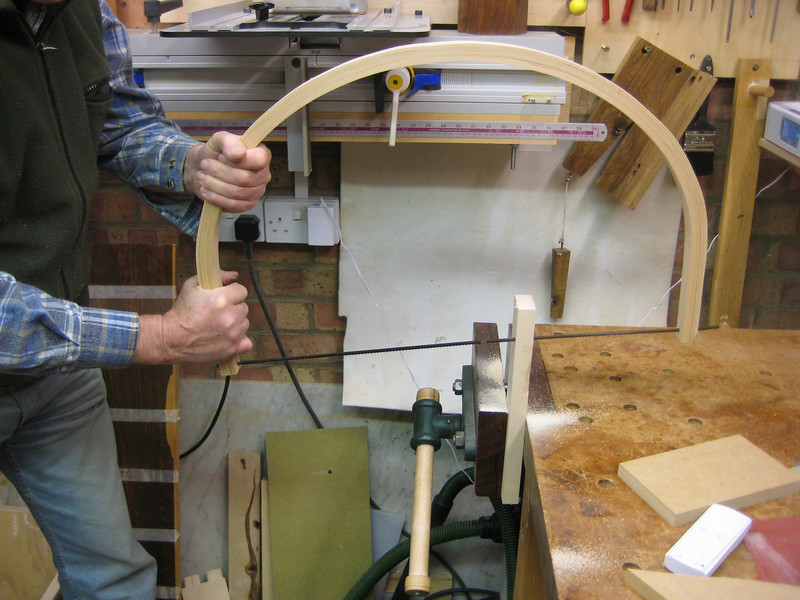Intuitively I'd say that the outside strapping is far more important, as the inside strap is only on the compression side of wood. I have been involved in wooden boatbuilding: when you want to get an extreme curve on wood (as on a vertical stem that's steamed on it's low end to meet the keel), a metal strap would be used on the outside (tension) side of the wood to avoid splitting. Steamed wood would then compress to a very small radius, as long as the splitting on the outside would be prevented by the metal strap. In your case the wood is dry and will resist compression immensely well, so the outside strap is most efficient to just prevent splitting.
The more important outside strap is shorter in your case, but I would estimate that the bow will never break due to compression. The inside strap may help in reinforcing the end of the bow, but to my eyes it isn't as important as the outside strap. you should only be able to extend the outside strap as long as possible - even on the cost of extending them to the ends of the bow and shortening the sawblade in the process.
Another point might be that using spring steel is hardly that important. If you think about it: you can bend the spring steel with your hands, but you can't bend the wood in the middle. So "springy" stuff isn't important, but tension and compression is. Steel is good in both, much better than wood. In that regard spring steel is not essential, it's just a layer on the edge to prevent extreme compression or tension - which would lead to splitting or local compressions of wood.
You'll get the greatest strength if you bind the outside and inside layers together, so that they can't slide. If you think of a pack of cards you can bend it as much as you like. If you take a piece of corrugated board a thickness of a pack of cards you could never bend it with your hands. A corrugated board would have only the inside and outside layers to prevent bend, the parts in the middle are just for keeping the layers apart and keep them from slipping in regard of each other.
So what I would do would be to use a very thin piece of (mild) steel on both sides of the wood, riveted together to avoid them slipping in relation to each other. If you only use wood screws to wood it will allow a very small slippage, but as we are talking about a very small flexure on the bow, a tiny amount of movement on the screws will make a huge difference.
I may be wrong and you have definitely investigated it more than I have, but you might want to think about it. This is only my intuition.
Pekka
P.S: a fancy image comes into my mind: how about a 2 mm brass or SS strip on the outside, extending from the top to the end of the bow, filed to meet the curve of the wood. The enlarged parts for the handles/tension screws would be placed in the inside of the bow and the design moved towards "old style" bow saws. A hi-tech classic?




































